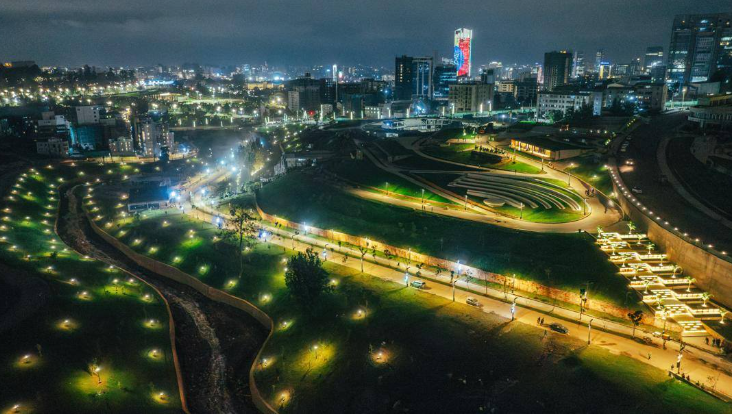Journalists from across Africa recently visited Addis Ababa and came away impressed. They praised how the Ethiopian capital has transformed through major infrastructure upgrades, organized city planning, and cleaner, more livable spaces. These visitors see Addis Ababa as a model that many African capitals could follow in urban development.
Well-Planned Roads, Freeways, and Pedestrian Spaces
One of the strongest compliments came for the city’s roads and freeways. Jackson Okata, a Kenyan journalist visiting Addis for the first time, noticed wide roads for cars, dedicated paths for motorbikes, and sidewalks for people to walk safely. He saw fewer traffic jams than he expected. Cars seemed to obey traffic rules more than in his home city, and the overall flow of traffic impressed him. He said that other capitals could learn from how Addis planned its transport network.

Similarly, Catherine Tembo from Malawi spoke of roads that look more advanced than those in many other capitals. She also noted that state buildings, like museums, look more modern and better equipped. Another visitor, John Riaga from Kenya, remarked on the good street lighting at night, which makes the city feel safer. He also praised the clear separation between vehicle roads and pedestrian zones, improving both safety and comfort.
Urban Design, Environment, and Climate-Aware Growth
Journalists emphasized that Addis Ababa does more than just build broad roads and flashy buildings. They saw evidence of climate-aware design and environmental concern. Agatha Ngotho from Kenya noted use of greenery, trees lining streets, good drainage, and how road designs consider weather and natural flow. The city appears to build with both people and the environment in mind.
These design choices matter. When cities manage traffic well, plan roads with pedestrians and not just cars in mind, and make neighborhoods walkable, quality of life improves. Journalists say Addis feels calmer and more comfortable, especially compared to crowded, chaotic capitals. These improvements also help reduce pollution, lessen traffic stress, and make moving around easier.
Comparing Past Visits to Current State
Many who visited had been to Addis before, and they say the difference is striking. Once Okata and others thought of Addis Ababa as crowded, disorganized, or under-developed. On this trip, they found new freeways, better lighting, smoother traffic, and more order. The cityscape at night looked brighter and cleaner, and public spaces felt more maintained.

Some journalists noted that where there had been congestion before, there now are well-marked roads and better traffic management systems. Pedestrian areas are more visible, lighting improves visibility at night, and major thoroughfares have become more efficient. These changes didn’t happen overnight; many credit steady investment, policy focus, and political will as reasons for transformation.
Hospitality and Civic Spirit Warmth Amid New Infrastructure
Beyond concrete and asphalt, visitors also spoke about the people and atmosphere. Journalists commented on the warmth of local residents, on how public services seem more orderly, on well-behaved traffic, and on how signs of civic discipline are more visible. Even with growth and construction, they felt Addis has managed to preserve a sense of community.
They also pointed out how maintenance seems more consistent: public lighting working at night, clean sidewalks, and new public areas. All these contribute to the feeling that the city is not just growing in size but becoming more livable and sustainable.
Challenges Seen and What Could Improve in Addis Ababa’s Model
Though journalists admired much, they acknowledged challenges remain. Some noted that growth is concentrated in central areas, while outskirts lag behind in infrastructure. Others said that even with better roads, more public transportation could reduce car dependence. Maintenance of roads, utilities, and green spaces will need continuous funding and management.
Also, as cities grow, managing informal settlements, ensuring affordable housing, and avoiding displacement become important. Some visitors cautioned that beautification and new developments must not push out low-income residents. Planning future infrastructure must include those who were once underserved, so growth remains inclusive.

